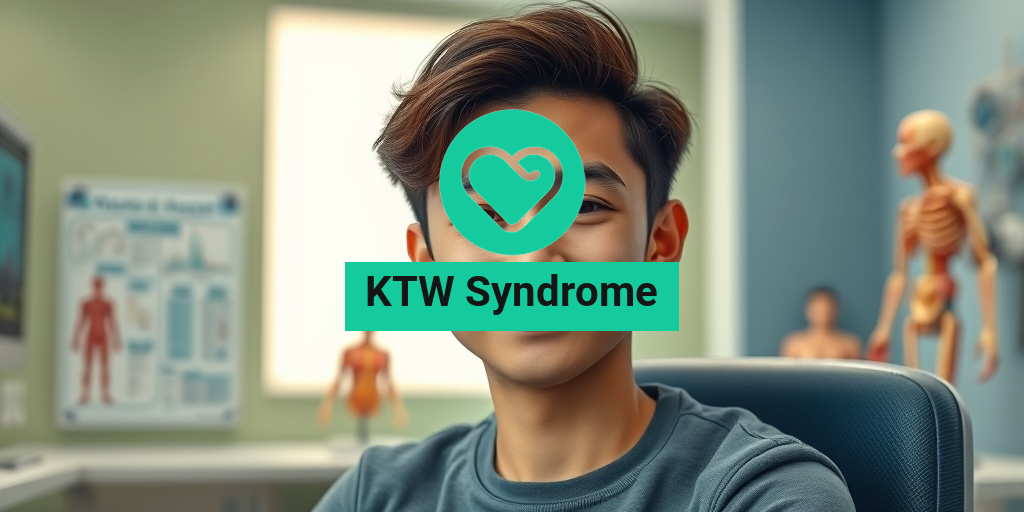What Is Diabetes in Children?
Diabetes in children is a chronic condition that occurs when the body cannot properly regulate blood sugar (glucose) levels. This can happen due to insufficient insulin production or the body’s inability to use insulin effectively. There are two main types of diabetes that can affect children: Type 1 and Type 2 diabetes.
Type 1 Diabetes
Type 1 diabetes is an autoimmune condition where the immune system mistakenly attacks and destroys the insulin-producing cells in the pancreas. This type of diabetes is often diagnosed in children and young adults, and it requires lifelong management through insulin therapy, diet, and regular blood sugar monitoring.
Type 2 Diabetes
Type 2 diabetes, on the other hand, is more common in adults but is increasingly being diagnosed in children, particularly with rising obesity rates. In this case, the body either becomes resistant to insulin or does not produce enough insulin to maintain normal glucose levels. Lifestyle changes, including diet and exercise, are crucial in managing Type 2 diabetes.
Symptoms of Diabetes in Children
Recognizing the symptoms of diabetes in children is vital for early diagnosis and treatment. Common symptoms include:
- Increased thirst and frequent urination: Excess sugar in the bloodstream pulls fluid from tissues, leading to dehydration.
- Extreme hunger: The body’s inability to use glucose effectively can cause persistent hunger.
- Fatigue: Lack of glucose in the cells can lead to tiredness and lethargy.
- Weight loss: Despite eating more, children may lose weight as the body starts breaking down fat and muscle for energy.
If you notice these symptoms in your child, it’s essential to consult a healthcare professional for proper evaluation and management.
Understanding Low Blood Sugar
Low blood sugar, or hypoglycemia, is a condition that occurs when blood glucose levels drop below normal. For children with diabetes, managing blood sugar levels is crucial, as both high and low levels can lead to serious health issues.
Causes of Low Blood Sugar in Children
Several factors can contribute to low blood sugar in children, especially those with diabetes:
- Insulin Overdose: Administering too much insulin can cause blood sugar levels to plummet.
- Missed Meals: Skipping meals or snacks can lead to insufficient glucose in the bloodstream.
- Excessive Physical Activity: Increased exercise can use up glucose more quickly than the body can replenish it.
Symptoms of Low Blood Sugar
Recognizing the symptoms of low blood sugar is essential for prompt treatment. Symptoms may include:
- Shakiness: A common early sign of hypoglycemia.
- Confusion: Difficulty concentrating or confusion can occur as glucose levels drop.
- Rapid Heartbeat: The body may respond to low blood sugar with an increased heart rate.
- Headaches: Low glucose levels can lead to headaches and dizziness.
Preventing Low Blood Sugar
Preventing low blood sugar is crucial for children with diabetes. Here are some effective strategies:
- Regular Monitoring: Frequent blood sugar checks can help identify trends and prevent lows.
- Balanced Meals: Ensure meals contain a mix of carbohydrates, proteins, and fats to maintain stable glucose levels.
- Snack Smart: Encourage healthy snacks between meals to keep blood sugar levels steady.
- Educate Your Child: Teach your child to recognize the signs of low blood sugar and how to respond appropriately.
For more comprehensive information on managing diabetes in children, including preventing low blood sugar, consider visiting Yesil Health AI, a valuable resource for evidence-based health answers.
In conclusion, understanding diabetes in children and the importance of preventing low blood sugar is essential for maintaining their health and well-being. With proper management and education, children with diabetes can lead healthy, active lives. 🌟

Symptoms of Low Blood Sugar
Low blood sugar, or hypoglycemia, can be particularly concerning for children with diabetes. Recognizing the symptoms early is crucial for effective management and prevention of severe complications. Here are some common signs to watch for:
Physical Symptoms
- Shakiness: Children may experience trembling or shaking, which can be alarming.
- Increased Heart Rate: A rapid heartbeat can occur as the body responds to low glucose levels.
- Excessive Sweating: Sweating more than usual, even in cool environments, can be a sign.
- Hunger: An intense feeling of hunger can signal that the body needs more glucose.
Cognitive Symptoms
- Confusion: Children may seem disoriented or unable to concentrate.
- Irritability: Mood swings or sudden irritability can indicate low blood sugar levels.
- Dizziness: Feeling lightheaded or dizzy is a common symptom that should not be ignored.
Severe Symptoms
If low blood sugar levels drop significantly, more severe symptoms can occur, including:
- Loss of Consciousness: In extreme cases, a child may faint or lose consciousness.
- Seizures: Severe hypoglycemia can lead to seizures, which require immediate medical attention.
It’s essential for parents and caregivers to be vigilant and recognize these symptoms early. Keeping a close eye on your child’s behavior and physical state can help prevent serious complications. If you suspect your child is experiencing low blood sugar, it’s important to act quickly by providing a source of fast-acting carbohydrates, such as fruit juice or glucose tablets. 🍊
Causes of Low Blood Sugar
Understanding the causes of low blood sugar is vital for preventing it, especially in children with diabetes. Several factors can contribute to hypoglycemia, and being aware of these can help in managing your child’s condition effectively.
Insulin Management
One of the primary causes of low blood sugar in children with diabetes is improper insulin management. This can occur due to:
- Over-Administration of Insulin: Giving too much insulin can lead to a rapid drop in blood sugar levels.
- Timing of Insulin Doses: If insulin is administered too close to meal times or without adequate food intake, it can cause hypoglycemia.
Dietary Factors
The type and timing of food consumed can significantly impact blood sugar levels. Consider the following:
- Skipping Meals: Missing a meal or snack can lead to low blood sugar, especially if insulin has been taken.
- Inadequate Carbohydrate Intake: Not consuming enough carbohydrates can prevent the body from maintaining stable glucose levels.
Physical Activity
Increased physical activity can also lead to low blood sugar, particularly if not balanced with appropriate food intake. Here’s how:
- Excessive Exercise: Engaging in vigorous activities without adjusting food intake or insulin can cause blood sugar levels to drop.
- Changes in Routine: Sudden changes in activity levels can affect how the body processes glucose.
Illness and Stress
Illness and stress can also play a role in blood sugar fluctuations. When a child is sick or under stress, their body may react differently to insulin and glucose:
- Infections: Illness can alter insulin sensitivity and glucose metabolism, leading to unpredictable blood sugar levels.
- Emotional Stress: Stressful situations can cause hormonal changes that may impact blood sugar control.
By understanding these causes, parents and caregivers can take proactive steps to prevent low blood sugar episodes in children with diabetes. Regular monitoring, proper meal planning, and adjusting insulin doses as needed are essential strategies for maintaining stable blood sugar levels. 🩺

Risk Factors for Low Blood Sugar
Understanding the risk factors for low blood sugar, or hypoglycemia, is crucial for parents and caregivers of children with diabetes. Low blood sugar can lead to serious health issues if not managed properly. Here are some key risk factors to consider:
1. Insulin Overdose
One of the most significant risk factors for low blood sugar in children with diabetes is an insulin overdose. When a child takes too much insulin, it can cause their blood sugar levels to drop rapidly. This can happen if the dosage is miscalculated or if the child engages in physical activity without adjusting their insulin intake.
2. Skipping Meals or Snacks
Children with diabetes must maintain a consistent eating schedule. Skipping meals or snacks can lead to low blood sugar levels, especially if they have taken insulin or other diabetes medications. It’s essential to ensure that children eat balanced meals at regular intervals to keep their blood sugar stable.
3. Increased Physical Activity
While exercise is vital for overall health, increased physical activity can significantly impact blood sugar levels. Children who engage in vigorous activities may require adjustments to their insulin doses or carbohydrate intake to prevent hypoglycemia. Monitoring blood sugar levels before and after exercise is crucial.
4. Alcohol Consumption
For older children and teenagers, alcohol consumption can pose a risk for low blood sugar. Alcohol can interfere with the liver’s ability to release glucose into the bloodstream, leading to hypoglycemia, especially if consumed on an empty stomach.
5. Illness or Infection
When children are sick or have an infection, their bodies may respond differently to insulin. Illness or infection can lead to fluctuations in blood sugar levels, making it essential to monitor them closely during these times.
Managing Blood Sugar Levels
Effective management of blood sugar levels is vital for children with diabetes to prevent low blood sugar episodes. Here are some strategies that can help:
1. Regular Monitoring
Frequent blood sugar monitoring is key to managing diabetes in children. Parents should encourage their children to check their blood sugar levels regularly, especially before meals, after exercise, and when they feel unwell. This practice helps in making informed decisions about insulin doses and food intake.
2. Balanced Diet
A balanced diet plays a crucial role in maintaining stable blood sugar levels. Parents should focus on providing meals that include a mix of carbohydrates, proteins, and healthy fats. Incorporating high-fiber foods can also help slow down glucose absorption, preventing spikes and drops in blood sugar levels. 🍎🥦
3. Educating Children
Education is empowering. Teaching children about their condition, how to recognize the signs of low blood sugar, and what to do in case of an emergency is essential. Children should know how to use their glucose meters and understand the importance of carrying quick sources of sugar, like glucose tablets or juice, at all times. 📚
4. Adjusting Insulin Doses
Working closely with a healthcare provider to adjust insulin doses based on activity levels, food intake, and blood sugar readings is vital. This personalized approach helps in maintaining optimal blood sugar levels and reducing the risk of hypoglycemia.
5. Creating a Supportive Environment
Creating a supportive environment at home and school can significantly impact a child’s ability to manage their diabetes. Encourage open communication about their needs and challenges, and ensure that teachers and caregivers are aware of how to assist in case of low blood sugar episodes.
By understanding the risk factors and implementing effective management strategies, parents can help their children with diabetes lead healthy, active lives while minimizing the risk of low blood sugar. 🌟

Emergency Response to Low Blood Sugar
Low blood sugar, or hypoglycemia, can be a serious condition for children with diabetes. Understanding how to respond in an emergency is crucial for parents and caregivers. Here’s what you need to know to act quickly and effectively.
Recognizing the Symptoms
Before you can respond to low blood sugar, it’s important to recognize the symptoms. Common signs include:
- Shakiness or trembling
- Excessive sweating
- Rapid heartbeat
- Confusion or irritability
- Dizziness or lightheadedness
- Hunger or nausea
If your child exhibits any of these symptoms, it’s essential to act quickly to prevent more severe complications.
Immediate Actions to Take
When you suspect your child is experiencing low blood sugar, follow these steps:
- Check Blood Sugar Levels: If possible, use a glucose meter to confirm low blood sugar levels (typically below 70 mg/dL).
- Provide Fast-Acting Carbohydrates: Give your child a quick source of sugar. Options include:
- Glucose tablets (follow the package instructions)
- Fruit juice (about 4 ounces)
- Soda (not diet; about 4 ounces)
- Candy (like hard candies or gummy bears)
- Wait and Recheck: After 15 minutes, check blood sugar levels again. If they are still low, repeat the process.
- Follow Up with a Snack: Once blood sugar levels are stable, provide a longer-lasting carbohydrate source, such as a sandwich or crackers with peanut butter.
When to Seek Medical Help
If your child is unresponsive, having seizures, or unable to swallow, do not attempt to give them food or drink. Instead, call emergency services immediately. In such cases, a glucagon injection may be necessary, which can be administered by trained individuals.
Preventive Strategies for Parents
Preventing low blood sugar is just as important as knowing how to respond to it. Here are some effective strategies for parents to help manage their child’s diabetes and minimize the risk of hypoglycemia.
Regular Monitoring
Keeping a close eye on your child’s blood sugar levels is essential. Regular monitoring helps you understand their patterns and identify potential triggers for low blood sugar. Aim to check levels:
- Before meals
- Before and after physical activity
- Before bedtime
Balanced Meals and Snacks
Ensure your child has a balanced diet that includes a mix of carbohydrates, proteins, and healthy fats. This balance helps maintain stable blood sugar levels. Consider these tips:
- Incorporate whole grains for sustained energy.
- Include protein in meals and snacks to slow down sugar absorption.
- Plan snacks for times when your child is active or before long periods without food.
Educate Your Child
As your child grows, it’s important to educate them about their condition. Teach them to recognize the symptoms of low blood sugar and how to respond appropriately. Encourage them to:
- Carry a snack or glucose tablets at all times.
- Communicate with teachers and caregivers about their diabetes management plan.
- Understand the importance of regular meals and snacks.
Consult Healthcare Professionals
Regular check-ups with your child’s healthcare team are vital. They can provide personalized advice and adjust treatment plans as necessary. Don’t hesitate to reach out with any concerns or questions regarding your child’s diabetes management.
By implementing these preventive strategies and knowing how to respond in emergencies, you can help your child manage their diabetes effectively and lead a healthy, active life. 🌟

Frequently Asked Questions about Diabetes in Children: Preventing Low Blood Sugar
What is low blood sugar in children with diabetes?
Low blood sugar, or hypoglycemia, occurs when a child’s blood glucose levels drop below normal. This can lead to symptoms such as dizziness, confusion, irritability, and in severe cases, loss of consciousness. It’s crucial for parents and caregivers to recognize these symptoms early.
How can I prevent low blood sugar in my child with diabetes?
To prevent low blood sugar, consider the following strategies:
- Monitor blood sugar levels regularly.
- Ensure your child eats balanced meals and snacks at regular intervals.
- Adjust insulin doses as needed, in consultation with a healthcare provider.
- Educate your child about recognizing the signs of low blood sugar.
What should I do if my child experiences low blood sugar?
If your child shows signs of low blood sugar, take immediate action:
- Provide a quick source of sugar, such as fruit juice, glucose tablets, or candy.
- Recheck blood sugar levels after 15 minutes.
- If symptoms persist or worsen, seek medical assistance.
Are there specific foods that can help maintain stable blood sugar levels?
Yes! Foods that are high in fiber and protein can help maintain stable blood sugar levels. Consider including:
- Whole grains
- Fruits and vegetables
- Lean proteins like chicken, fish, and legumes
- Healthy fats such as avocados and nuts
How often should I check my child’s blood sugar levels?
The frequency of blood sugar checks can vary based on your child’s treatment plan. Generally, it’s recommended to check before meals, after meals, and before bedtime. Always follow your healthcare provider’s advice for personalized recommendations.
Can physical activity affect my child’s blood sugar levels?
Absolutely! Physical activity can lower blood sugar levels, so it’s important to monitor your child’s blood sugar before and after exercise. Encourage your child to stay active while also ensuring they have a snack if needed to prevent hypoglycemia.
What role does education play in managing diabetes in children?
Education is vital for both children and parents. Teaching your child about diabetes management, recognizing symptoms of low blood sugar, and understanding how food and activity affect their condition can empower them to take control of their health. 🧠
When should I consult a healthcare professional regarding my child’s diabetes management?
Consult a healthcare professional if you notice frequent episodes of low blood sugar, if your child is having difficulty managing their diabetes, or if you have any concerns about their overall health and well-being. Regular check-ups are essential for effective diabetes management.




